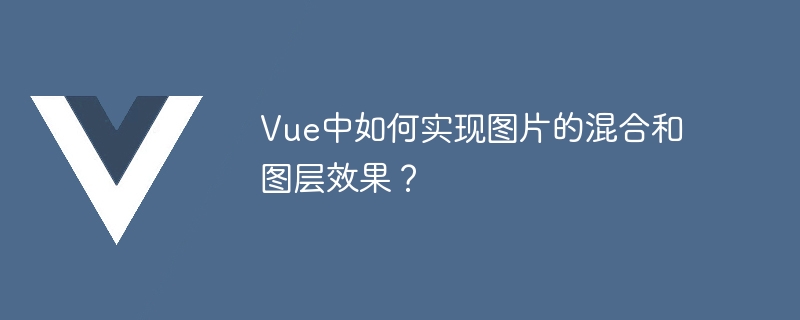

How to achieve image mixing and layer effects in Vue?
In web development, image blending and layer effects are one of the important elements in creating attractive page designs. Vue, as a popular JavaScript framework, provides powerful functions to achieve these effects. This article will introduce how to use Vue to achieve image blending and layer effects, and attach code examples.
First, we need to use Vue components to build the page. Create a new Vue component named "ImageLayer".
<template>
<div class="image-layer">
<img :src="imageSrc" class="background-image" alt="How to implement image mixing and layer effects in Vue?" >
<div class="overlay-layer"></div>
</div>
</template>
<script>
export default {
name: 'ImageLayer',
data() {
return {
imageSrc: 'path/to/image.jpg'
}
}
}
</script>
<style scoped>
.image-layer {
position: relative;
width: 500px;
height: 300px;
}
.background-image {
width: 100%;
height: 100%;
}
.overlay-layer {
position: absolute;
top: 0;
left: 0;
width: 100%;
height: 100%;
background-color: rgba(0, 0, 0, 0.5);
}
</style>In the above code, we create a component that contains a background image and an overlay layer. The background image is dynamically bound to the imageSrc variable through the :src attribute, which you can modify according to your actual situation. The overlay layer is implemented through a div element, which is overlaid on the background image using the position: absolute attribute.
Next, we can introduce this Vue component where we need to use image mixing and layer effects, and customize the effects through styles and bound data.
<template>
<div class="app">
<h1>图片混合和图层效果</h1>
<ImageLayer></ImageLayer>
</div>
</template>
<script>
import ImageLayer from './ImageLayer.vue'
export default {
name: 'App',
components: {
ImageLayer
}
}
</script>
<style>
.app {
text-align: center;
}
</style>In this example, we introduce the ImageLayer component into a parent component named App. You can add other HTML elements and styles to the App component according to actual needs to present the final page effect.
When you run this Vue application in the browser, you will see a page with a background image and an overlay layer effect. You can customize the image blending and layer effects by modifying the style and bound data in the ImageLayer component.
To summarize, through Vue and its powerful component functions, we can easily achieve image mixing and layer effects. The above example provides a simple starting point from which you can further customize and extend. I hope this article can help you achieve excellent page design in Vue!
The above is the detailed content of How to implement image mixing and layer effects in Vue?. For more information, please follow other related articles on the PHP Chinese website!
 The difference between tcp and udp
The difference between tcp and udp
 lte
lte
 What should I do if msconfig cannot be opened?
What should I do if msconfig cannot be opened?
 what is xfce
what is xfce
 How to solve the problem of no internet access when the computer is connected to wifi
How to solve the problem of no internet access when the computer is connected to wifi
 How to add css style to html
How to add css style to html
 There are several output and input functions in C language
There are several output and input functions in C language
 The difference and connection between java and javascript
The difference and connection between java and javascript




